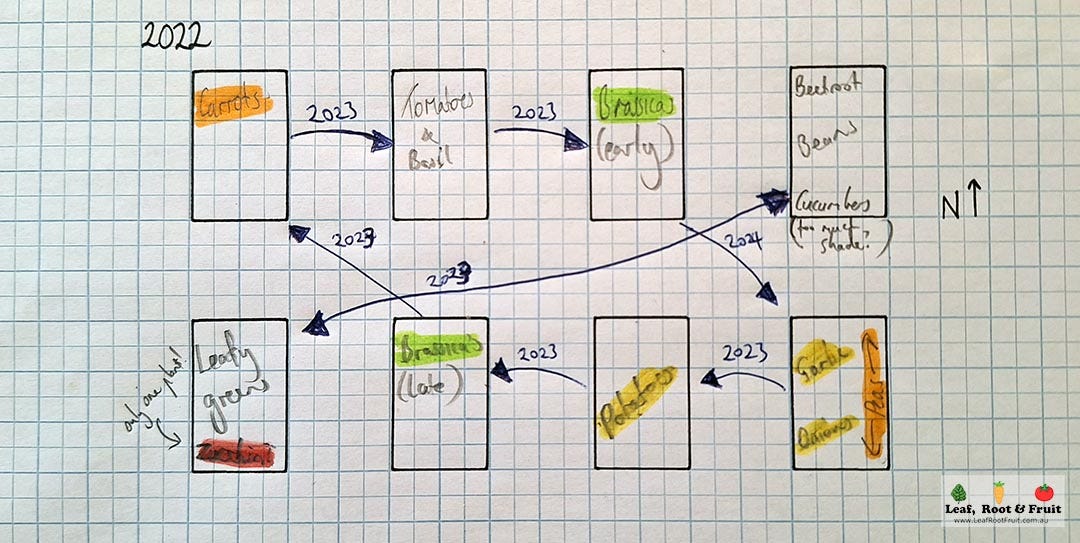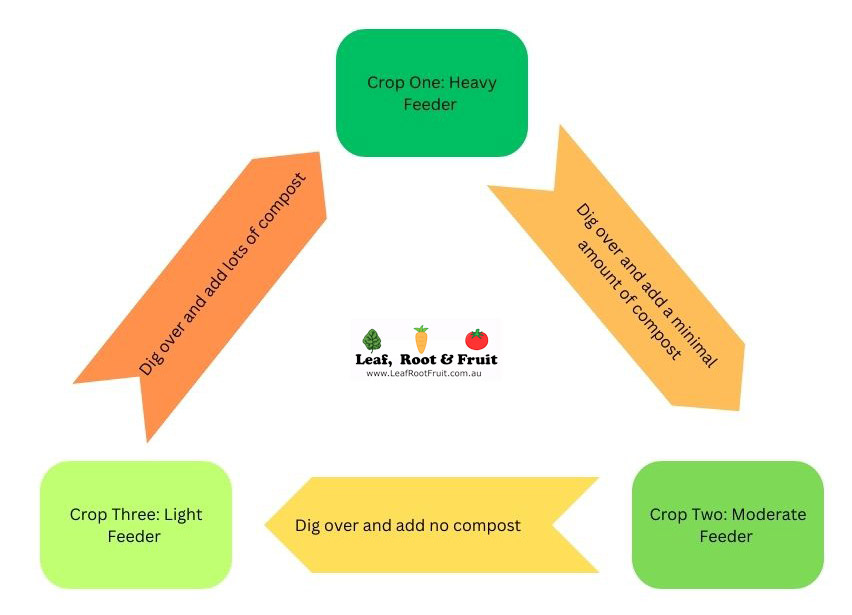Crop Rotation
Part Eighteen of the Vegetable Patch from Scratch Series
Traditionally, vegetable gardeners rotate their crops from one area to the next. The aim of traditional crop rotation is to reduce the impact of pests and diseases. For example, growing tomatoes in the same space year after year may lead to a build-up of diseases and pests that favour tomatoes. By growing your tomatoes in a different space each year, you will escape heavy populations of pests and diseases and have healthier crops and more produce.
However, a healthy soil food web will quickly bring any extreme loads of pathogens under control. Choosing resilient varieties of plants rather than those that are susceptible to diseases will also overcome these problems (more on this in Part 22). I don’t see the need to rotate crops from one place to the next each year to reduce the impact of disease and pest attack.
So why do I practise crop rotation?
Rotating crops can be useful in ensuring that nutrient levels are adequate for crops. The only crop rotation that I practise is based on catering for the nutrient needs of different vegetables.
As discussed in Part 7, the soil for planting vegetables needs to mimic early soil succession conditions. Digging the soil over before planting mimics a major disturbance event. The addition of nutrient-rich compost will elevate nitrogen levels. This approach to soil preparation favours annual plants.
However, some consideration should still be given to the individual niche that each type of vegetable prefers. Fast growing, hungry plants such as sweet corn need lots of nitrogen and therefore should have plenty of compost added before planting. Some vegetables, such as carrots, will split and fork when grown in rich, fertile soil so they shouldn’t have compost added before planting. These plants will still benefit from the soil being dug over. Try using crop rotation based on nutrient requirements in your vegetable patch as per the following diagram.
To get maximum versatility from your vegetable patch and cater for the needs of a wide variety of vegetables, add compost to one area of your patch and not others. In this compost-enriched area grow a crop from the first column in the table below.
The next season, in the same soil, grow a moderate feeding crop from the middle column. Consider digging it over, but don’t add much (if any) nutrient-rich material or compost prior to planting.
In the third growing season, don’t add any compost and focus on crops from the third column.
In the fourth growing season you can add large amounts of compost and continue the cycle again with a heavy feeder from the first column.
In any given year, you should have multiple areas of your vegetable garden in different phases of this cycle.



